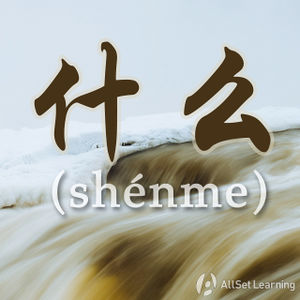Expressing "everything" with "shenme dou"
-
Level
-
Similar to
-
Used for
-
Keywords
"什么...都/也" (shénme...dōu/yě) is a pattern often used to express "all" or "everything".
Contents
Structures
The structure is very clear, as many Chinese grammar points are.
什么 + Noun. + 都
什么 + Noun. + 也
什么 + 都/也
Examples
- 以后 你 应该 什么 水果 都 吃。Later you should eat every fruit.
- 我 什么 电影 都 喜欢 看。I like to watch all the movies. (implying that I like all the movies that come my way)
- 今天 我 什么 工作 都 做了。Today I did all my work.
- 我 什么 都 知道。I know everything.
Negative Structures
The negative structure simply adds a 不 or a 没 after the 都/也.
什么 + Noun. + 都/也 + 不
什么 + Noun. + 都/也 + 没
Examples
- 以后 你 应该 什么 水果 都 不 吃。Later you should not eat every fruit.
- 我 什么 电影 都 不 喜欢 看。I don't like to watch every movie. (implying I don't like movies in general)
- 今天 我 什么 工作 都 没 做。Today I didn't do any work.
- 我 什么 都 不 知道。I don't know anything.
See also
Sources and further reading
Books
- Common Chinese Patterns 330 (汉语常用格式330例) (pp. 195)→buy
- Modern Mandarin Chinese Grammar: A Practical Guide (pp. 286-8) →buy



